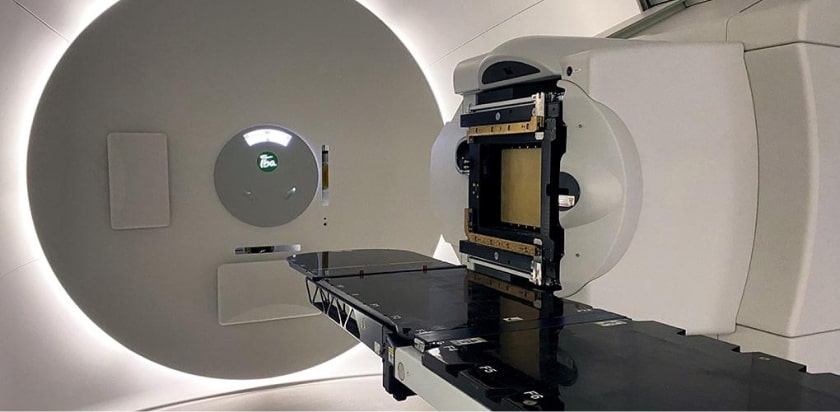
Medical Physics Team Studies How to Optimize LET to Improve Prostate Cancer Treatment
September is Prostate Cancer Awareness Month
The month is dedicated to those who lost their lives to prostate cancer as well as those who survived and continue to thrive post-diagnosis. Making cancer treatment better for patients, driving research and innovation are at the forefront of the mission at the UF Health Proton Therapy Institute.
Read ahead for more about one of the most recent studies advancing prostate cancer treatment. Further in the newsletter are three prostate cancer survivor spotlights showcasing men who have celebrated 5, 10 and 15 years post cancer treatment.
A group of physicists and doctors at the UF Health Proton Therapy Institute studied Linear Energy Transfer (LET) in proton therapy to demonstrate the feasibility of improving prostate cancer patient outcomes by optimizing LET in pencil beam scanning proton treatment plans. When radiation interacts with a solid, like the body, it transfers some of its energy to the solid. This interaction is called Linear Energy Transfer or LET.
The article published in the peer-reviewed journal Cancers is “Potential Therapeutic Improvements in Prostate Cancer Treatment Using Pencil Beam Scanning Proton Therapy with LETd Optimization and Disease-Specific RBE Models.” Let’s break down some key findings from the study:
Proton Therapy
Proton therapy is a form of radiation that uses protons instead of X-ray (photon) radiation beams. Since protons have weight and are not just a light wave, they can stop at a desired location in the body, where they deposit the highest dose of radiation.
When you putt a golf ball, you determine the speed necessary to go over any obstacles to make the ball stop where you want it—this is like how proton therapy works. To make sure the radiation stops where we want it to, protons are sent at the speed needed to get through any tissue before they stop at their desired target—the tumor or cancerous tissue. Read more about how proton therapy works.
RBE
RBE is short for Relative Biological Effectiveness. RBE is how much damage is done to cells and tissues in the body during radiation. The higher the RBE, the higher the damage and the greater the potential for cure.
It quantifies how much more effective proton beams are than X-ray beams. For example, if it takes twice as much dose for X-rays to have the same effect as protons, the proton RBE equals two. The RBE multiplied by the proton dose is the equivalent dose if X-rays had been used instead.
LET Optimization
LET is Linear Energy Transfer. The RBE depends on the LET. In a very brief explanation, the damage done/effectiveness of treatment depends on where and when the dose is deposited and how. LET describes how the dose is deposited.
For example, the LET where the proton stops are higher than when it enters the body. The higher the LET, the higher the RBE, or the potential damage to the cells can be. The goal is to place high LET in the tumor to have the optimal effect on the patient’s cancer cells, while keeping the LET low in healthy surrounding organs at risk. This helps to reduce side effects.
In review, the research allows us to see if the LET can be optimized to improve patient outcomes, decrease chances of cancer recurrence and maintain low rates of side effects
The study’s results concluded that incorporating LET optimization with the targeted pencil beam scanning potentially increases the effectiveness of the damage to cancerous cells. More effectiveness means the ability to deliver higher doses of radiation to the target areas, which will likely improve prostate cancer cure rates.
Knowing the LET also allows the physicists to know how much the radiation might affect healthy organs at risk. The goal is to reduce damage to healthy tissue resulting in lower side effects for patients with prostate cancer. Read more about potential side effects to prostate cancer treatment.
Thanks to medical physicists, the entire radiation oncology team can better understand and optimize radiation treatment plans for each patient. While this is a complex science, the goal is to improve outcomes for cancer patients. Dive into the research yourself.
This article was originally published as a blog on the UF Health Proton Therapy Institute’s Blog Spot. Read more of our blogs and the expanded blog about LET and prostate cancer treatment at www.floridaproton.org/blog-spot.

